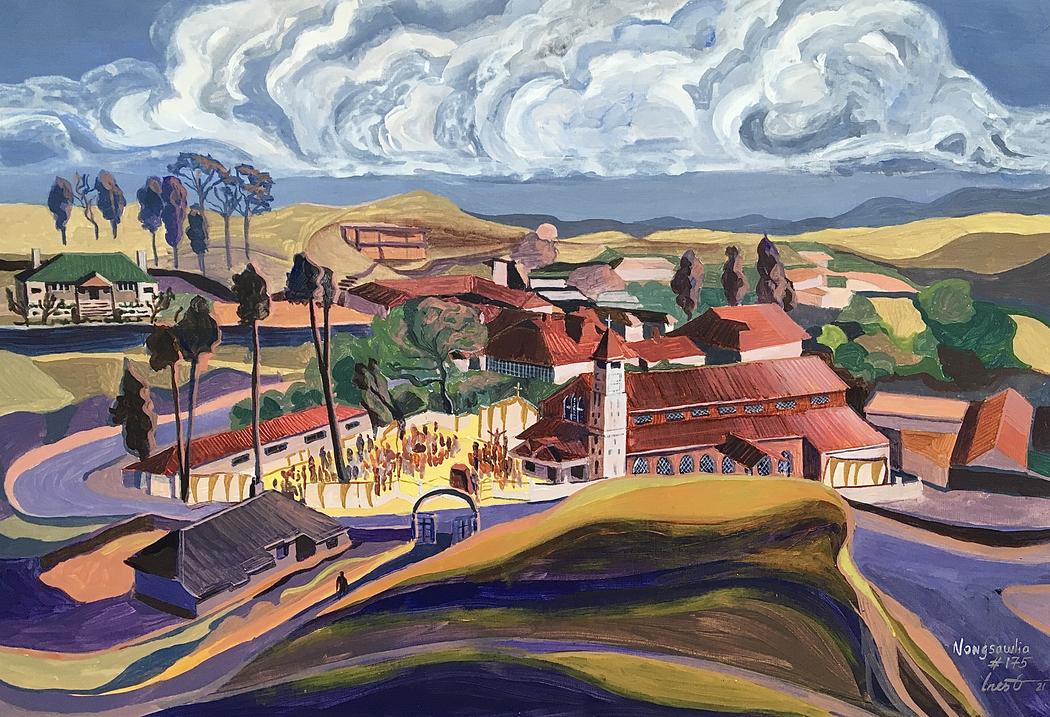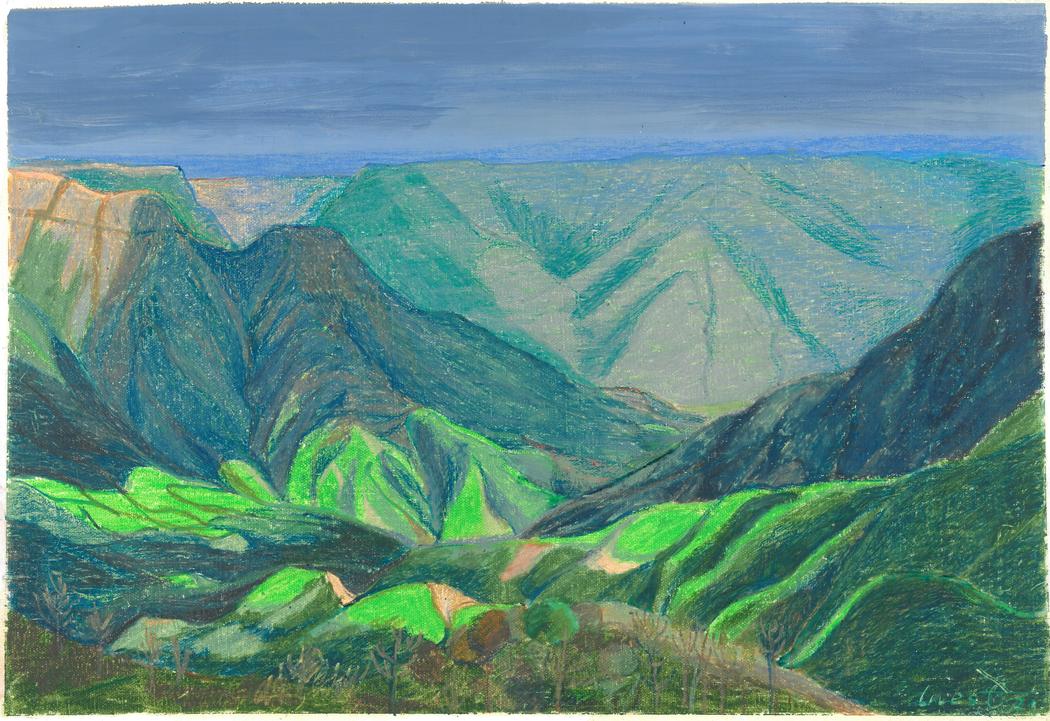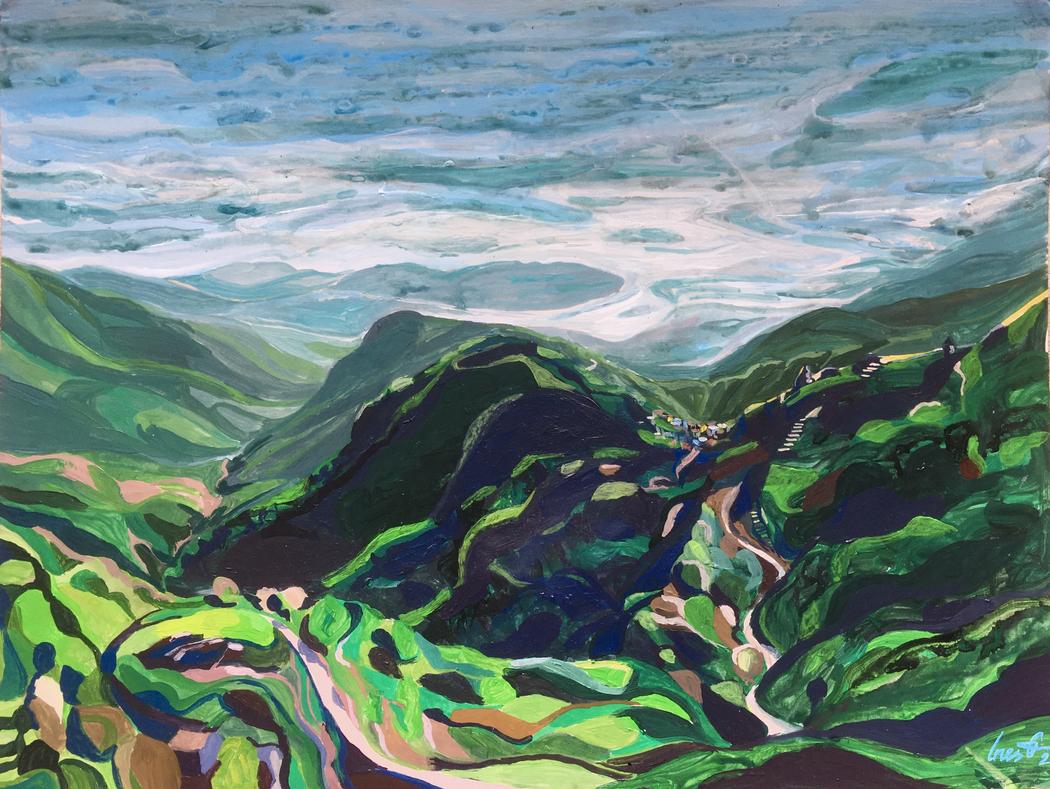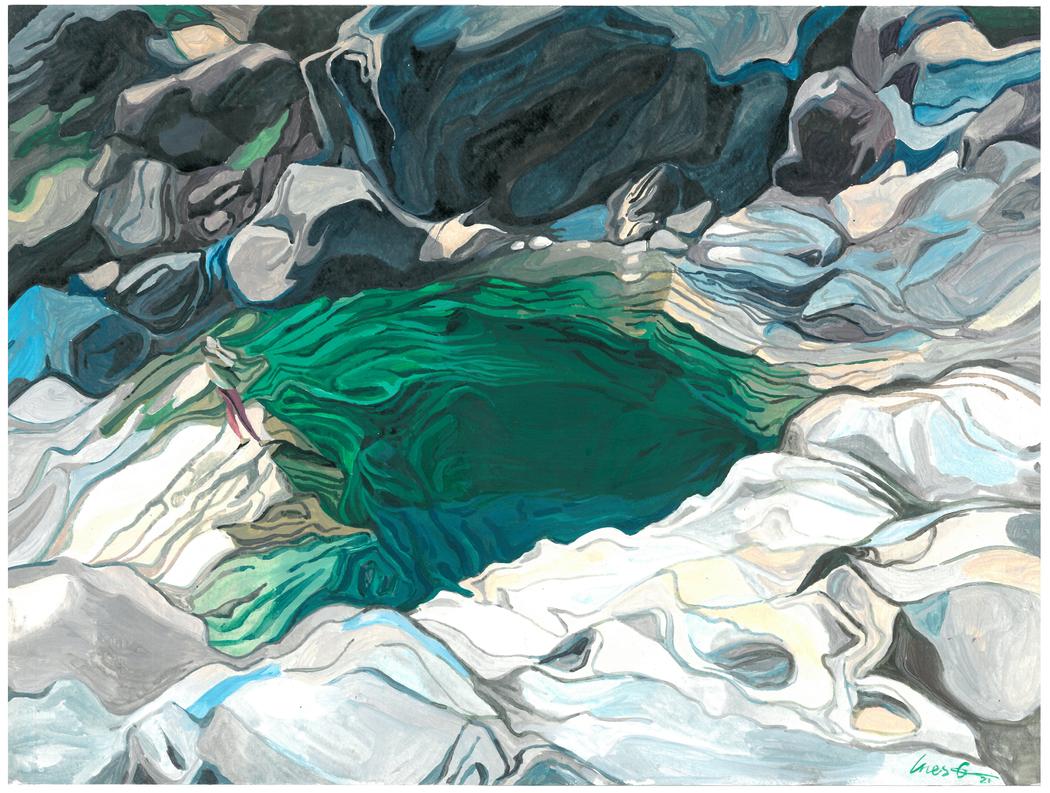Inessa Garder
Where do you live: London, UK
Your education: BA Architecture — Novosibirsk State Academy of Architecture & Fine Arts; MA Interior Architecture — Scuola Politecnica di Design, Milan; Central Saint Martins, University of the Arts London
Describe your art in three words: Fluid · Sacred · Transformative
Your discipline: Painting / Immersive Performance
Website
 Inessa Garder | Self-portrait Painting Nohkalikai | 2021
Inessa Garder | Self-portrait Painting Nohkalikai | 2021
What first drew you to Meghalaya and inspired you to begin this project?
In 2021, I travelled to the North-East of India — to Meghalaya, the “Abode of Clouds.” The journey began through serendipity, as they usually do in India. A fellow traveller I met in Rishikesh noticed that I often painted water and suggested I visit Meghalaya. When I looked up images of the place — mountains touching clouds, turquoise rivers running through deep valleys — the decision was instant. I knew I had to go. In Meghalaya I stayed with a Khasi family in a 150-year-old house built by Welsh missionaries. I simply knocked on the most beautiful house on the hill, showed them my sketchbook, and said I wished to paint the beauty of their land. They welcomed me to their house, and I stayed for almost a month. Almost every day I tied a folder of paper to my backpack, rode my motorbike through winding roads, and painted from life — the slopes, waterfalls, and valleys where India meets Bangladesh.
 Inessa Garder | Nongsawlia | 2021
Inessa Garder | Nongsawlia | 2021
How did your architectural background influence the way you perceived and depicted these landscapes?
Architecture taught me to approach painting as a project — to organize my work, think in series, and build a coherent visual language and statement. In architecture, I often worked on large international projects involving up to two hundred people, so I learned how to communicate across cultures and make things happen from the ground up. That experience gave me the confidence to simply knock on a door in a remote Khasi village, speak to the family, and create an artist residency for myself there. There are no art residencies in Meghalaya, and yet I had one – because I’m an architect, I guess.
You mentioned living with a Khasi family — how did that experience shape your understanding of the land and its people?
The Khasi people are among the kindest and most open-hearted I’ve ever met. Their connection to the land is deep and spiritual. Sometimes they guided me to hidden waterfalls — we would descend thousands of steps together, and they would wait patiently while I painted. They showed me the living root bridges — the miracle of Meghalaya, unique to this land. One of my works, Nongsawlia Village, became a gift to the head of the family — a 90-year-old grandmother named Ivory (in Khasi culture, society is matrilineal, and women are traditionally the heads of households). She was a deeply spiritual woman of Presbyterian faith, who prayed often and radiated quiet strength. When I presented her with the painting, she blessed me and my art. They hung the piece in their living room that same day, during a large family celebration — more than a hundred people gathered to honour her. Everyone treated her with immense reverence. The following year, I learned that she had passed away.
 Inessa Garder | Nohkalikai | 2021
Inessa Garder | Nohkalikai | 2021
The interplay of water and earth seems central to this series. What does water represent to you as an artist?
My work always begins with water — not simply as a subject, but as a state of being. For me, water is the origin and dissolution of all forms, a living symbol of transformation and return to essence. Through painting, I enter its movement — the place where shapes appear and dissolve, where everything is in flow. In Meghalaya, water was everywhere: cascading from cliffs, running through limestone valleys, merging with clouds. Painting it felt like becoming part of that current, where even stone reveals its liquid/impermanent nature.
 Inessa Garder | May It Be | 2021
Inessa Garder | May It Be | 2021
Many of your works feel as if the landscape itself is breathing. How do you achieve that through color and form?
I paint outdoors, often using quick expressive mediums like acrylics, ink, and oil pastels. The humidity, wind, and light all interfere with the process — they become my collaborators. I let gravity and accidents play their part. That’s how movement enters the painting naturally, as if the landscape continues to breathe on paper.
 Inessa Garder | Ladsohbar | 2021
Inessa Garder | Ladsohbar | 2021
You often paint on paper in large formats outdoors. What are the challenges and freedoms of working that way?
Painting alone in nature — face to face with a waterfall like Nohkalikai, the highest plunge waterfall in India — is an incredibly powerful, transformative experience. It is also scary in some irrational unexplainable way: you just feel the imbalance of power between you and such a giant. It feels less like work and more like a daring ritual, a vow to one’s own soul. Each session becomes a kind of dialogue with the elements, where you make inner promises or discover truths that later unfold in life, sometimes years afterward. These are places of power, and to paint within them is to plant a seed of revolution – daring, dangerous, life-changing.
 Inessa Garder | Akhia | 2021
Inessa Garder | Akhia | 2021
What do you hope viewers feel when they encounter these works?
I hope they feel a sense of connection — to the landscape, to others, to their own soul. Meghalaya taught me to listen to the land as to a living organism and to channel nature’s immense energy into the work of my soul. Through these paintings, I wish to share that transformative quality — to invite others into a space where the soul can merge with nature and, through that union, become something greater.

Leave a Reply